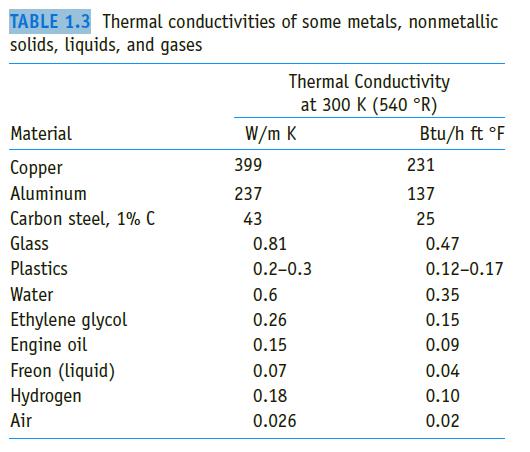In Design Problem 1.3, you calculated the heat loss from a small industrial building in the winter.
Question:
In Design Problem 1.3, you calculated the heat loss from a small industrial building in the winter. In the initial calculations, you estimated the convection heat transfer coefficient from Table 1.3. Repeat the heat loss calculations, but now calculate the external heat transfer coefficient from material presented in this chapter. To estimate the forced convection conditions on the building, assume that winds in Denver, Colorado, reach as high as 115 km/h, but under normal conditions do not exceed 30 km/h. Discuss the effect of lighting on the heat load and estimate what the effect of electric lights is if 20 150-W incandescent bulbs are needed to provide adequate lighting for this industrial building. Can you suggest an improved lighting method?
Data from in Problem 1.3
A furnace wall is to be constructed of brick having standard dimensions of 22.5 cm × 11 cm × 7.5 cm Two kinds of material are available. One has a maximum usable temperature of 1040°C and a thermal conductivity of 1.7 W/(m K), and the other has a maximum temperature limit of 870°C and a thermal conductivity of 0.85 W/(m K). The bricks have the same cost and are laid in any manner, but we wish to design the most economical wall for a furnace with a temperature of 1040°C on the hot side and 200°C on the cold side. If the maximum amount of heat transfer permissible is 950 W/m2, determine the most economical arrangement using the available bricks.
Data from in Table 1.3

Step by Step Answer:

Principles Of Heat Transfer
ISBN: 9781305387102
8th Edition
Authors: Frank Kreith, Raj M. Manglik, Mark S. Bohn





